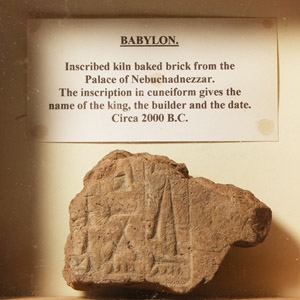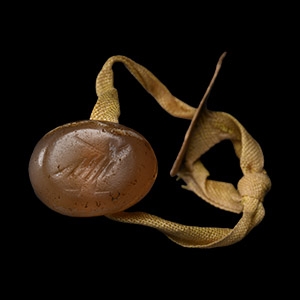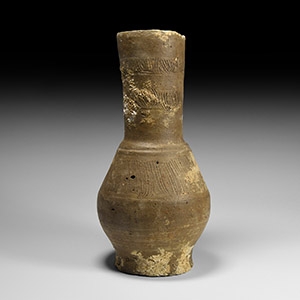With a tapering cylindrical body and bulbous base, applied trails, scrolls and loop handle; remains of iridescence, repaired. 73.9 grams, 16 cm
London private collection, 1979-1983.
With scaphoid bezel, incuse image of an armoured warrior with shield and spear, a horseman and a hatched gate or wall. 4.12 grams, 25.84 mm overall, 21.41 mm internal diameter (approximate size British V, USA 10 1/2, Europe 23.77, Japan 22)
Acquired 1980-2015.
Ex Abelita family collection.
Cf. Chadour, A.B., Rings. The Alice and Louis Koch Collection, volume I, Leeds, 1994, item 25, for similar type.
The figure with two pierced ears and painted face detailing, neck ornamentation and arm bangles, continuing to the reverse; mounted on a custom-made display stand. 61 grams total, 13 cm high including stand
Ex UK collection formed in the 1980s.
Acquired on the London art market.
Accompanied by an Artemission, London SW5, certificate of authenticity.
Terracotta was a favoured material for the production of idols in the ancient Near East, the idols themselves representing deities, particularly goddesses that were connected to fertility. Such idols could even represent worshippers themselves.
The Neo-Hittite civilisation, also known as the 'Syro-Hittite' civilisation, existed during the Iron Age in the areas that are now modern day northern Syria and Southern Anatolia. The Hittite empire collapsed around the 12th century B.C., an event which was proceeded by the decline of the Eastern Mediterranean trade networks, together with the fall of the major late Bronze Age cities in the Levant, Anatolia, and the Aegean.
Composed of a bowl with convex wall, everted rim and splayed foot; painted with a frieze of geometric motifs to the exterior and rim interior; repaired. 1.3 kg, 25 cm wideFine condition, base repaired.
Acquired 1970s-1990s.
Ex Pars Gallery, Mayfair, London, UK.
From a specialist collection of pottery.
Comprising a wedge-shaped blade and piriform handle. 156 grams, 17.7 cm
UK private collection formed before 2000.
Ex North London, UK, gallery.
Cf. Gernez, G., L’armament en métal au Proche et Moyen-Orient: des origines a 1750 av. J.C., Paris, 2007, fig.2.3, subtype of flat axes H.1..B, for the type.
These blades were fitted directly to the handle or via a sheath. Flat axes, whose axis is parallel to that of the handle, often had a rounded edge like in our specimen, or a flared and bevelled edge, while flat adzes have an axis perpendicular to that of the handle and a bevel edge on one side only. Their shape comes directly from the lithic axes of the Neolithic and Chalcolithic periods.
Comprising a pendant in the form of a spearhead, balustered neck with suspension loop; remains of a spearhead with tang. 38.4 grams total, 8.5-18 cm
with a London, UK gallery 1971-early 2000s.
Comprising a tinned and gently carinated bowl with inverted rim; bracelet with raised rib to the expanded bezel and coiled arms; tinned piriform jar or vase; a cup with D-section medial band, integral foot and collector's identification label to base; spool-shaped fitting with decorative notching; bowl with foot and everted rim, symbol to interior base; bowl with lotiform base and broad everted rim; bowl with scalloped rim. 1.6 kg total, 4.3-17 cm
Acquired 1990s-early 2000s.
East Anglian private collection.
Roughly hemispherical in form with small discoid foot. 95 grams, 90 mm wide
From an important specialist collection formed in London, UK, before 1988.
Bearing lines of stamped Babylonian cuneiform inscription to one face, framed with old label which reads: 'BABYLON / Inscribed kiln baked brick from the Palace of Nebuchadnezzar. The inscription in cuneiform gives the name of the king, the builder and the date. Circa 2000 B.C. 300 grams total, 14.5 x 14.5 cm
Ex Kathleen Bouch (né Graves-Morris), circa 1930.
From the collection of John Wyn Graves-Morris, who had it until his death in 2012; thence by descent.
Wheel-shaped stamp seal; accompanied by an old scholarly note, typed and signed by W.G. Lambert, late Professor of Assyriology, University of Birmingham, 1970-1993, which states: 'Stamp Seal of Bronze. 38 x 37 x 15 mm. This is round, with flat face and flat back, on which is a handle of inverted U-shape. The design, which is compartmented and open-work, consists of a plain outer band, and within it but not touching it is a central rhomb, joined to the outer band by two rough crescent shapes, bulging at the ends, and close to each other in the middle. This comes from west central Asia and dates to c. 2300-2000 B.C. It is in very good condition save that the outer rim is worn down.' 15 grams, 37 mm
From an important London, UK, collection, 1970s.
Accompanied by a scholarly note by Professor Wilfrid George Lambert FBA (1926-2011), historian, archaeologist, and specialist in Assyriology and Near Eastern archaeology.
Standing right to base in stylised form, drilled for suspension and held on a fabric thong. 7.7 grams, 20 mm
From the collection of a North American gentleman, formed in the 1990s.
Unglazed with biconvex body, slightly flared foot, ribbed shoulder and tubular neck; bands of irregular scratch detailing to neck and shoulder; hole to base. 720 grams, 26 cmFine condition, hole to the base.
Acquired on the European art market in the 1990s.
Ex property of a Suffolk collector.
See Lane, A., Early Islamic Pottery: Mesopotamia, Egypt & Persia, London, 1947, for discussion.

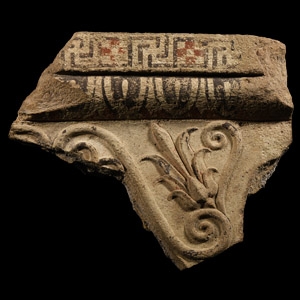
.jpg)


.jpg)
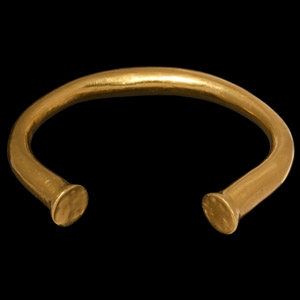
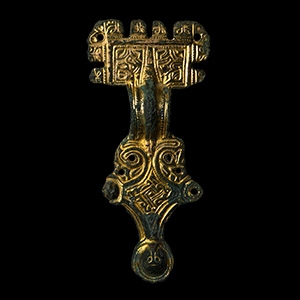

.jpg)
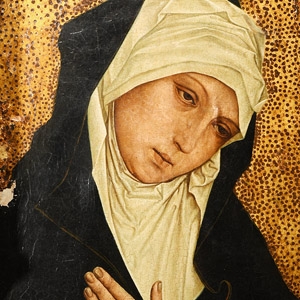

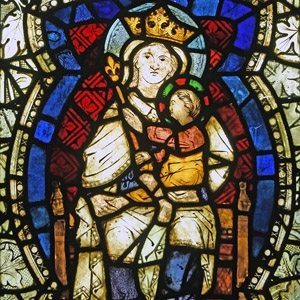
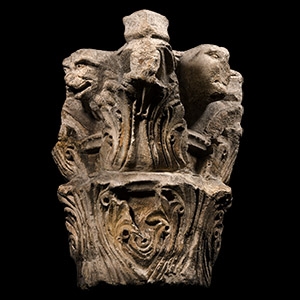
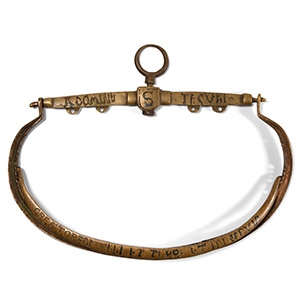
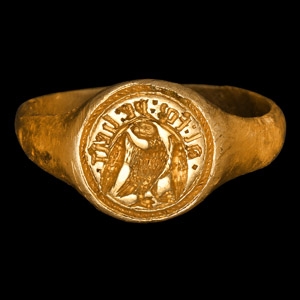
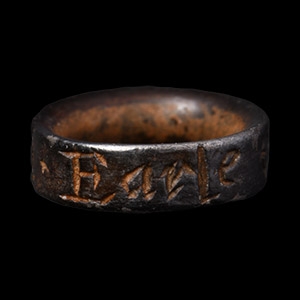
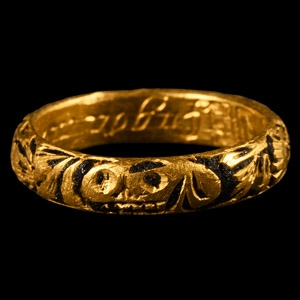
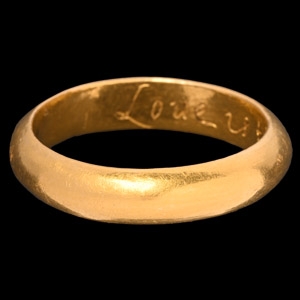
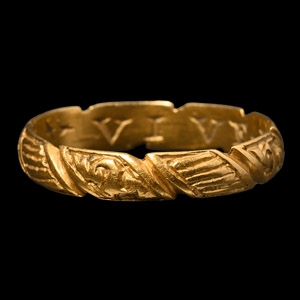
![English Milled Coins - George VI - 1937 - Cased RM Proof Coronation Gold Set [4] English Milled Coins - George VI - 1937 - Cased RM Proof Coronation Gold Set [4]](https://timelineauctions.com/upload/images/items/small/203351-s(2).jpg)
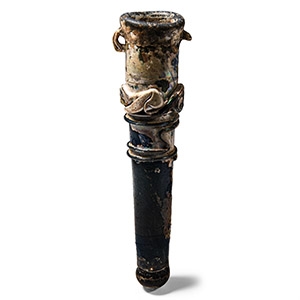
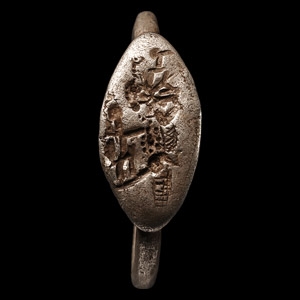


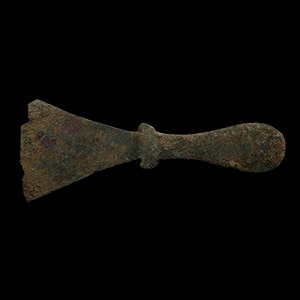
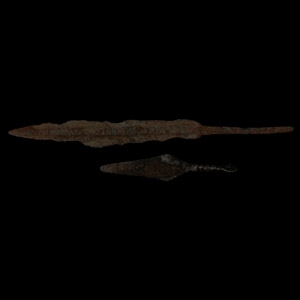
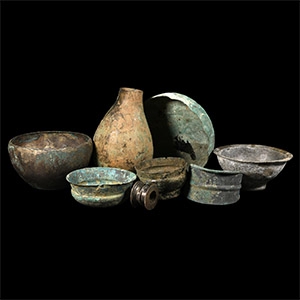
.jpg)
